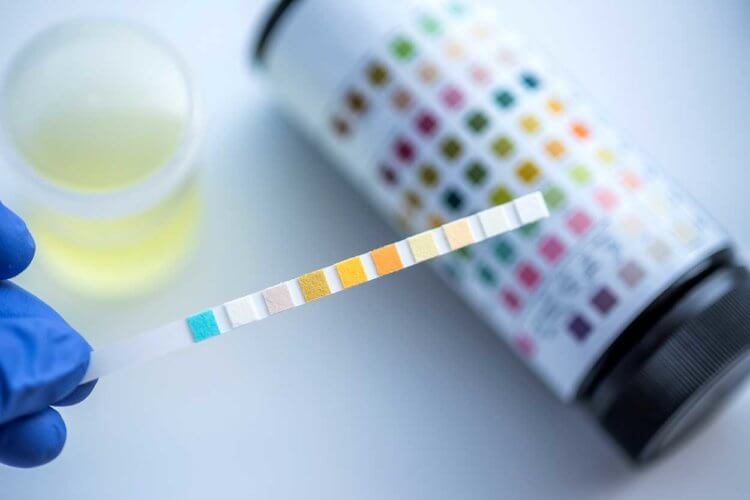What Drug Panel Should I Choose?
Mobile Health drug testing comes with a variety of options. After deciding to launch an employer drug testing program, you need to know which drugs to test for, how to test for them, and why. This guide walks you through the various drug panels, which panel might suit your business needs, and what specific drugs industries typically test for.

Panel Drug Testing
The industry often refers to specific drug tests as ‘panel drug tests.’ Each specific drug tested equals one panel. For example, a 6-panel drug test examines a specimen for the presence of six different substances.
The most common drug test, a standard 5-panel urine drug test, examines a urine specimen for the presence of:
- THC (Marijuana)
- Cocaine
- Opiates
- Phencyclidine (PCP)
- Amphetamines
Going beyond the 5-panel urine drug test
Six-Panel Drug Test:
Seven-Panel Drug Test:
A 7-panel test usually adds on benzodiazepines & barbiturates. Sedative-hypnotic drugs, barbiturates decrease anxiety and fight insomnia. Known commonly as ‘downers,’ barbiturates affect the brain in a way similar to alcohol or sleeping pills. Frequent abuse of barbiturates occurs in suicide attempts and may cause death or coma – making them a dangerous class of drug. Barbiturates, if abused, can cause extreme drowsiness and confusion. Again, industries highly concerned with safety should test employees for barbiturate abuse.
Eight-Panel Drug Test:
Nine-panel drug test:
Ten-panel drug test:
A 10-panel drug test usually adds on Benzodiazepines, Barbiturates, Quaaludes, Propoxyphene, & Methadone. Methadone can be abused as a pain reliever and can cause extreme exhaustion and numbness.
Eleven-panel drug test:
Twelve-panel drug test:
WHAT PANEL SHOULD I CHOOSE?
If you don’t have any needs or legal requirements to test beyond these substances, a 5-panel test is a perfectly reasonable choice to serve as your company’s drug testing policy. In general, the 5-panel test looks for the presence of commonly abused street drugs, while larger panel tests search for abuse of prescription drugs and painkillers as well.
However, choosing the panel test that works best for your company depends on several factors:
- Your industry
- The laws applying to your industry for drug testing
- Corporate culture
Industry-specific drug testing standards:
- The DOT legally requires a standard 5-panel test for all drivers. The DOT requires drivers to take a pre-employment drug test, a random drug test yearly, and an annual drug test.
- Mobile Health recommends that home health aides take an 8-panel test.
- Construction and heavy machinery-related industries frequently test 9 or more panels. The need for alertness in these industries is high and a normal side effect of abused prescription drugs is fatigue – a side effect that’s extremely dangerous in high-activity industries.
- Civil servants are required to pass a 5-panel test. However, some states now require them to pass a 10-panel drug test.
- Employers who have, or want to establish a strict drug-free workplace policy may choose to require their employees to pass a comprehensive 12-panel test.
Corporate culture:
Companies who primarily employ wealthy, white-collar workers, may want to test their employees for designer drugs or drugs that are meant to improve focus. These drugs have a much greater incidence of abuse in certain fields. For example, while cocaine was the most commonly abused drug among stockbrokers in the 1980s, and is still abused in this occupation today, in recent times abuse of Ritalin, Adderall, & Provigil has skyrocketed.
Further, some companies may have a culture that doesn’t object to a typically tested drug. With expanding legalization of Marijuana and differing corporate outlooks on the drug, some companies might choose a 4-panel drug test, testing for everything in a typical 5-panel test but excluding the THC panel.
WHAT DRUGS CAN BE TESTED?
While the sky is not quite the limit when it comes to options for employer drug testing, a great number of drugs can be tested, including:
Marijuana, Cocaine, PCP, Amphetamine, Ecstasy, Methamphetamine, Opiates, Oxycodone, Methadone, Barbiturates, Benzodiazepines, Buprenorphine, Tricyclic Antidepressants, Propoxyphene, Tramadol, Fentanyl, Sufentanil, Zolpidem, Carisoprodol, Meperidine, Antihistamines, Synthetic Cannabinoids, Designer Stimulants (Bath Salts), Dextromethorphan, Direct Ethanol Biomarkers, High Potency Opioids, Ketamine, Propofol Glucuronide, & Ritalin.
Employer drug testing programs can test for alcohol as well, but due to its rapid clearance from urine and the bloodstream, is usually tested randomly or due to reasonable suspicion. Mobile Health offers Breath Alcohol Tests to detect the presence of alcohol.
How far back can drugs be detected?
This varies by the drug and testing medium. Drug tests can utilize urine, hair, blood, or saliva for testing. The choice of testing medium impacts how far back substances can be detected. In addition, the size, weight, health, level of hydration, and other factors can impact drug detection periods. – check out our Mobile Health blog article on drug detection periods.
How accurate are drug testing results?
Employer drug testing performed through Mobile Health’s services are SAMHSA and DOT certified, reviewed by a Medical Review Officer, and collected according to anti-tampering specifications. Mobile Health drug testing is performed at our 6,500+ nationwide locations, or we can send our on-site teams directly to you.
Want more information?
If you have further questions, please contact us.